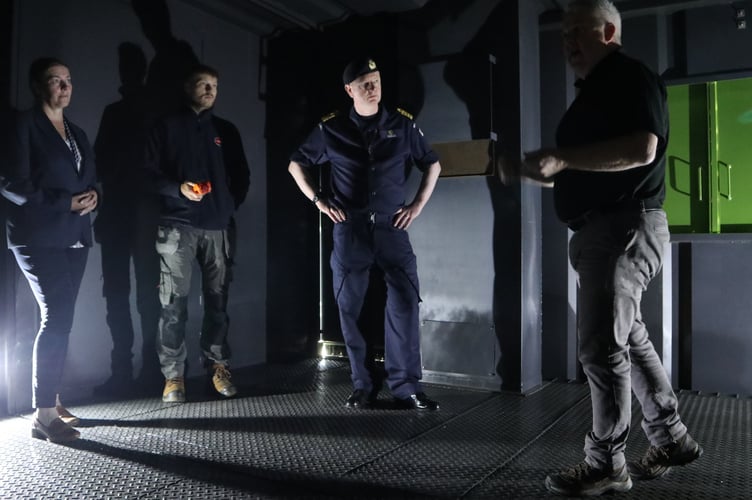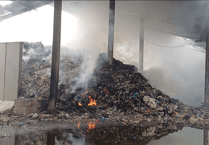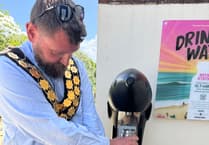A new £4.4-million Fire Rescue Training Centre has been officially handed over for training at Royal Naval Air Station Culdrose at Helston.
Built of steel on two levels, with rooms, corridors and stairwells, the facility can be used to simulate a burning building or ship.
It will be used by the Royal Naval School of Flight Deck Operations, alongside existing training rigs which simulate aircraft fires, to train aircraft handlers, who specialise in firefighting and rescue.
The new centre has six gas burners which can reach temperatures of up to 1,000 degrees, as well as ‘cribs’ to contain burning wooden pallets.
Smoke can be added, the lights cut to plunge the rooms into darkness, and fires reignited including overhead ‘flash-ups’ which spread flames across the ceiling, all at the touch of a button by a watchful instructor armed with a remote control.

Captain James Hall, the air station’s commanding officer, said: “This is state-of-the-art equipment that provides us with a much-needed and credible training facility. This will allow our trainees to understand and experience, in as realistic an environment as possible while still remaining safe, the difficulties of firefighting both in domestic and maritime environments.
“It is a fantastic addition to the facilities here at Culdrose and it will give our personnel the training and skills they will potentially need to face these dangers for real.”
Members of the command team at RNAS Culdrose, aircraft handler instructors from the training school, and staff involved in the delivery of the project were given a test of its ferocious power by Peter Gould, the managing director of company KFT Fire Trainer.
He said the centre was designed to make the experience as realistic as possible including metal plates which reflect heat and steam back towards the trainee firefighters. One room is fitted with sprinklers, to give the trainees the added difficulty of fighting a blaze with their clothing heavy from a dousing of cold water.
Mr Gould said there are emergency buttons which immediately shut off the fires and ventilate the building, as well as a stop-system which is triggered automatically by sensors measuring temperature and gas levels, meaning exercises can be caried out in a controlled and safe way.
The new Fire Rescue Training Centre is a Royal Navy Infrastructure project delivered by Defence Infrastructure Organisation and contractor VIVO Defence Services. It replaces a previous training centre which had reached the end of its service life.




.jpg?width=209&height=140&crop=209:145,smart&quality=75)
Comments
This article has no comments yet. Be the first to leave a comment.